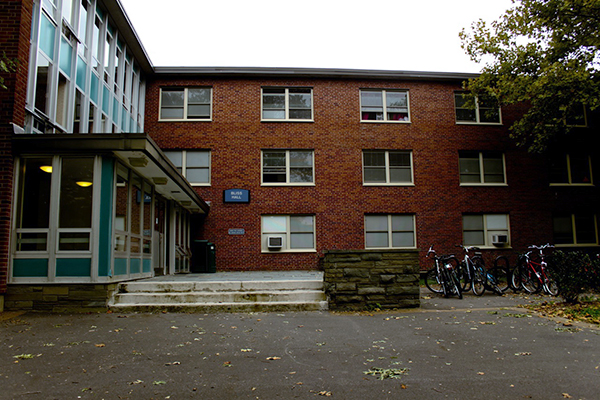Over the summer the last affected New Paltz residence hall, Bliss, underwent asbestos abatement.
A campus-wide asbestos survey was done in 1987 to help determine the location and condition of asbestos in campus buildings, Director of Facilities Design and Construction John McEnrue said.
According to Asbestos.net, asbestos was used regularly in construction for insulating, fireproofing and soundproofing properties. If asbestos is inhaled it can lead to a number of illnesses such as asbestosis, mesothelioma, lung cancer and other problems, based on how much a person is exposed to, WebMD.com said.
The Bliss studies found small traces of asbestos in some walls, ceilings and floor tile, McEnrue said. However, he said, the traces of asbestos found in the hall were in good condition and presented no health-risks.
“To be harmful, it must be friable and airborne. Friable means that it is soft, and can be broken with pressure,” McEnrue said. “The traces of plaster found in the walls, ceilings and floor tile are not in that state unless disturbed.”
Asbestos was commonly used in building materials before the mid-1970s and occasionally until the late 1980s McEnrue said. He said, Bliss Hall was built in the mid-twentieth century when the use of asbestos was common.
Asbestos was used during this time period because it is fire and corrosion resistant, and a good insulator. However, McEnrue said campus residents do not have to worry about contamination because the ACM building materials were intact.
“There are absolutely no health concerns for residents of Bliss Hall or anyone visiting, for that matter,” McEnrue said. “The asbestos that was disturbed there this summer was removed in its entirety under the supervision and direction of federal guidelines enforced by the Department of Labor (DOL).”
When Bliss and other residence halls underwent abatement, no students were present inside the rooms, Assistant Vice President of Facilities Management John Shupe said.
Shupe said “a project of this scale” would not be done in the presence of students for safety reasons.
“The asbestos that was disturbed this summer was abated under supervision and direction of federal/state guidelines enforced by NYS Department of Labor by licensed certified contractors,” he said. “As part of this abatement, multiple air samples were taken throughout the building — all of the samples were found to be at safe levels.”
Fortunately for Esopus and Lenape Hall residents, there is no need to worry about asbestos — both were built in the early 2000s and asbestos was no longer used in building by then, McEnrue said.
However, McEnrue said every other residence hall has also experienced abatement. He said this was done most commonly by removing floor tile in corridors, lobbies and lounges, but Crispell Hall also went through a complete renovation.
McEnrue said the cost of abatement of each hall is not set to an exact amount. Each residence hall has its own “scope.” Until the specific work that is to be performed is established, it is not possible to state the cost.

